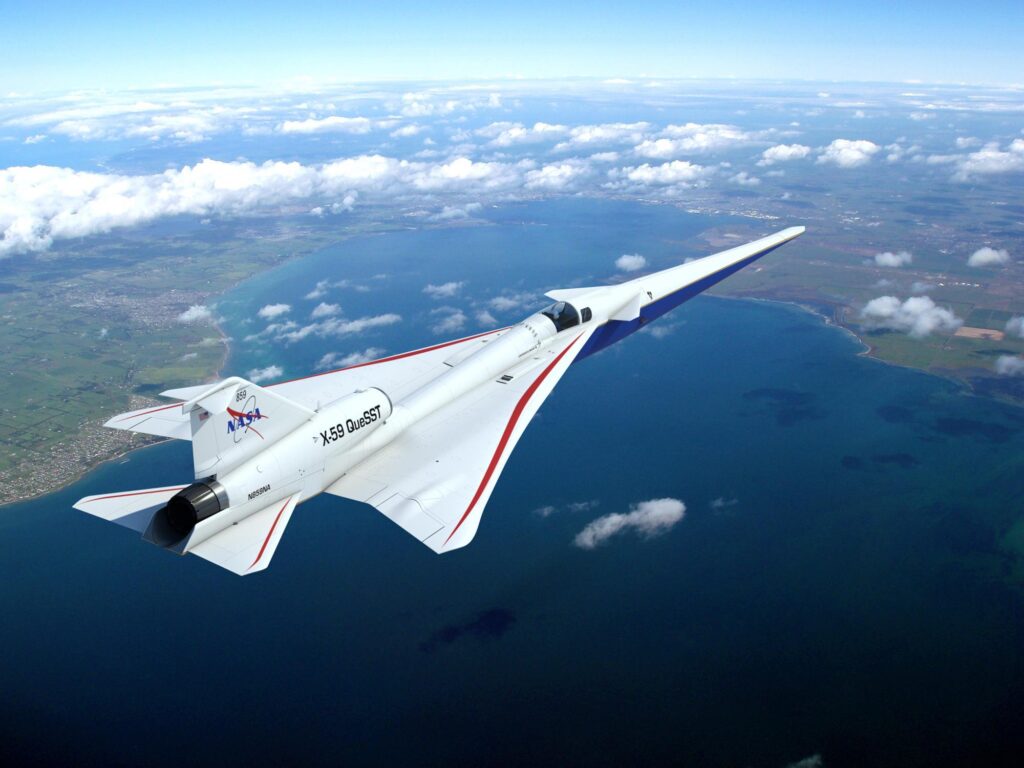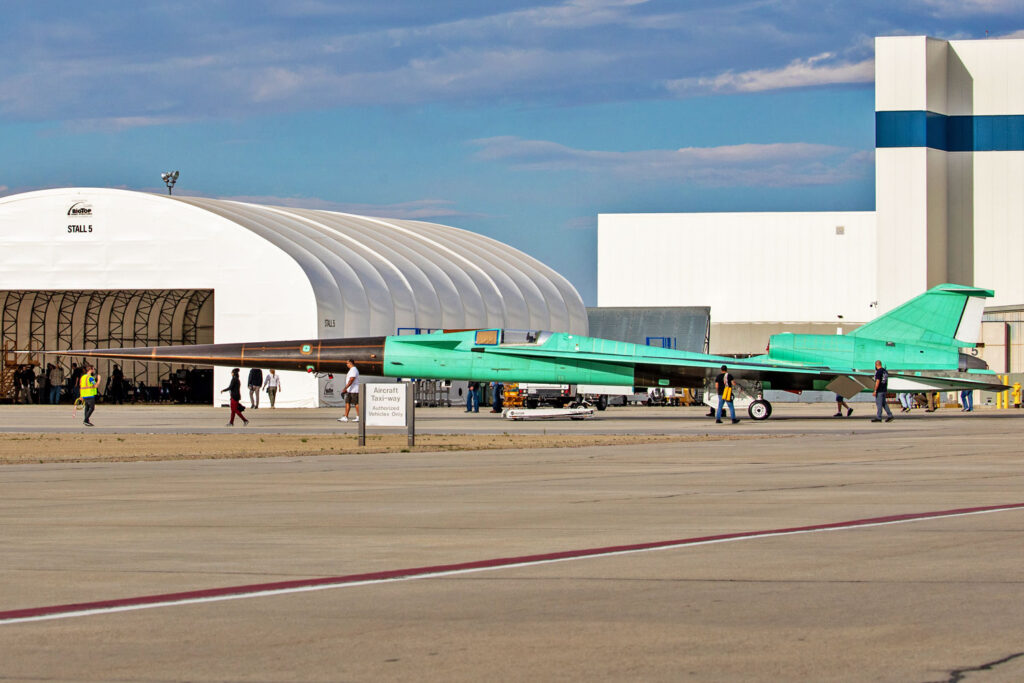What if an airplane was as silent as a closing car door and faster than the speed of sound? Is this concept even possible? Fighting the ban against supersonic transportation made by the FAA, NASA’s new debut of the ongoing Lockheed Martin Quesst mission (2018-2014) may change flight travel as we know it. The mission you may ask? To build an airplane with a unique wind defying shape that will hopefully silence the sonic boom while still going an incredible speed of 925 mph, better yet known as the Supersonic X-59 plane.
The main feature NASA outlines with this innovative idea is the major reduction of noise. The FAA, or Federal Aviation Administration, banned any supersonic ways of transportation for one main reason, the sonic boom. The sonic boom is a loud noise created when supersonic aircrafts take off and are in flight.
The sound can reach up to 110 decibels, becoming louder as the object moves faster. It would take only 2.5 minutes of this noise for a human to go deaf or have severe damage to their eardrum.

NASAs solution to this ear-deafening problem relies heavily on the build of the aircraft. The tapered nose, which makes up almost a third of its length, is designed to cut through shock waves that are created during supersonic speeds. These shock waves are what create the sonic boom, so this step is integral to achieving a softer sound. The plane is also designed to have a smoother bottom by keeping its engine at the top of the plane. By doing so, the sound waves that would usually form behind the aircraft slide off the smooth underbelly making it unable to create a sonic boom.
Furthermore, the intense speeds that the plane is predicted to reach can change air travel and battle as we know it. The purpose of the plane as a whole is to show that by using aerodynamics, scientists can create an aircraft that can possibly fly faster than the speed of sound. X-59 is said to fly 1.4 times faster than the speed of sound. Every detail picked out is to make the plane more aerodynamic. The wings of the airplane are “swept back” to reduce air drag, as well as its elongated body (almost 100 feet) and slimmer width, it can cut through the air with ease.

Though the speed and sound are big factors in the reason behind creating the X-59 plane, the main purpose for creating this plane is to collect responses to the public’s view and thoughts of the sonic boom. Once NASA completes all the flight tests, X-59 will fly over specific cities to collect the responses and present them to the Federal Aviation Administration. NASA hopes that the new technology will become available to the next generation and assist them to take the next step in transportation. Due to it being a test aircraft fit for one pilot, the plane isn’t able to carry passengers. However if the airliner gets a positive response, it takes humanity one step closer to creating an even faster way of air travel and trade.
Even though project Quessts X-59 is currently only experimental, it is expected to take flight later this year around March, making that the first flight of the aircraft. The project has taken the technology world by storm, and many cannot believe that this ambitious concept is so close to becoming a reality.

